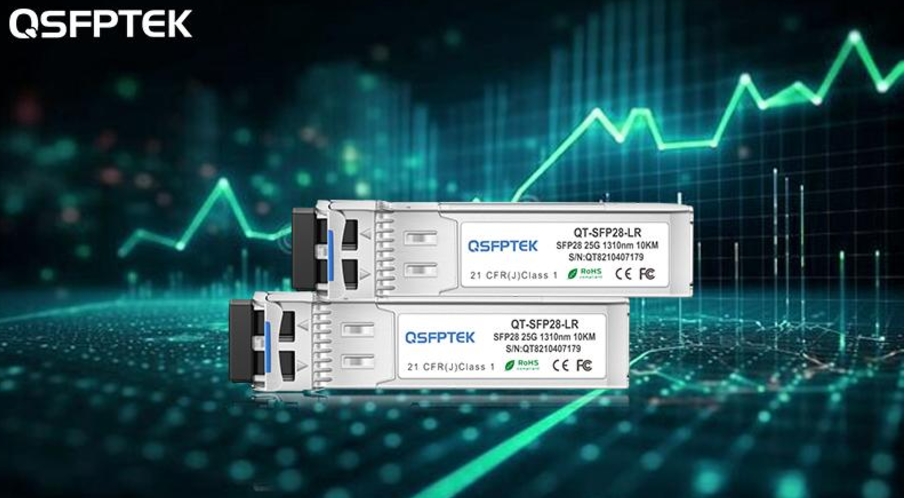Overview
In today’s dynamic technological landscape, where digital transformation is the norm, network upgrades are essential for organizations aiming to keep pace with the evolving demands of modern applications and services. Amidst this backdrop, the emergence of 25G modules has heralded a new era in networking infrastructure, offering unprecedented levels of performance, scalability, and flexibility. This comprehensive exploration will delve into the profound impact and significance of 25G modules on network upgrades. We will elucidate how these modules aid organizations in achieving network enhancements, bolstering performance, throughput, and scalability, while also navigating the challenges inherent in the upgrade process, offering pragmatic solutions to ensure seamless transitions.
The Transformative Impact of 25G Modules on Network Upgrades
In an era characterized by exponential growth in data volumes and the proliferation of bandwidth-intensive applications, traditional network infrastructures often struggle to meet the demands of modern business operations. Enter the transformative potential of 25G modules, which represent a quantum leap forward in network technology. With data transfer rates reaching 25 gigabits per second (Gbps), these modules offer significantly higher throughput compared to their predecessors, enabling organizations to handle the ever-increasing volume of data traffic with ease. Whether it’s facilitating real-time communication, supporting high-definition video streaming, or powering cloud-based applications, 25G modules provide the bandwidth and performance required to drive innovation and efficiency in today’s digital age.
Facilitating Network Enhancements with 25G Modules
The deployment of 25G modules serves as a linchpin for network enhancements across diverse organizational domains. Firstly, it enables seamless upgrades of existing network infrastructures without necessitating wholesale overhauls, thereby minimizing disruption and cost. By leveraging the backward compatibility of 25G modules with existing network equipment, organizations can seamlessly integrate these modules into their networks, unlocking the benefits of higher performance and throughput without the need for extensive reconfiguration. Moreover, It provide a future-proof foundation for subsequent upgrades to higher-speed technologies such as 100G or 400G, thereby ensuring continued scalability and adaptability to meet future needs. Furthermore, the enhanced performance and bandwidth afforded by 25G modules translate into tangible benefits for end-users, facilitating faster access to mission-critical applications and services, enhancing productivity, and driving business growth.
Navigating Challenges in the Network Upgrade Journey
Despite the myriad benefits offered by 25G modules, organizations embarking on network upgrades may encounter a plethora of challenges along the way. These challenges encompass compatibility issues with existing network equipment, interoperability concerns across heterogeneous vendor ecosystems, and the imperative for meticulous planning and coordination to ensure a seamless transition. However, amidst these challenges lie opportunities for innovation and problem-solving. Organizations can mitigate compatibility concerns through rigorous compatibility testing, foster interoperability through engagement with multi-vendor initiatives, and chart a course toward successful upgrades through collaboration with seasoned network consultants. Additionally, organizations must address the challenge of cost-effectiveness, ensuring that network upgrades deliver a favorable return on investment while meeting the evolving needs of the business.

Conclusion
In conclusion, the advent of 25G modules represents a watershed moment in the realm of network upgrades, offering organizations a gateway to enhanced performance, scalability, and future readiness. By harnessing the transformative capabilities of 25G modules, organizations can surmount the challenges inherent in network upgrades and unlock the full potential of their network infrastructure. However, achieving successful network upgrades necessitates meticulous planning, rigorous testing, and collaboration with trusted partners. With a strategic approach, organizations can harness the power of 25G modules to propel their networks into the next frontier of connectivity, laying the foundation for sustained growth and innovation. As organizations continue to embrace digital transformation and leverage advanced networking technologies, It will remain at the forefront, driving innovation, efficiency, and competitiveness in the digital age.











